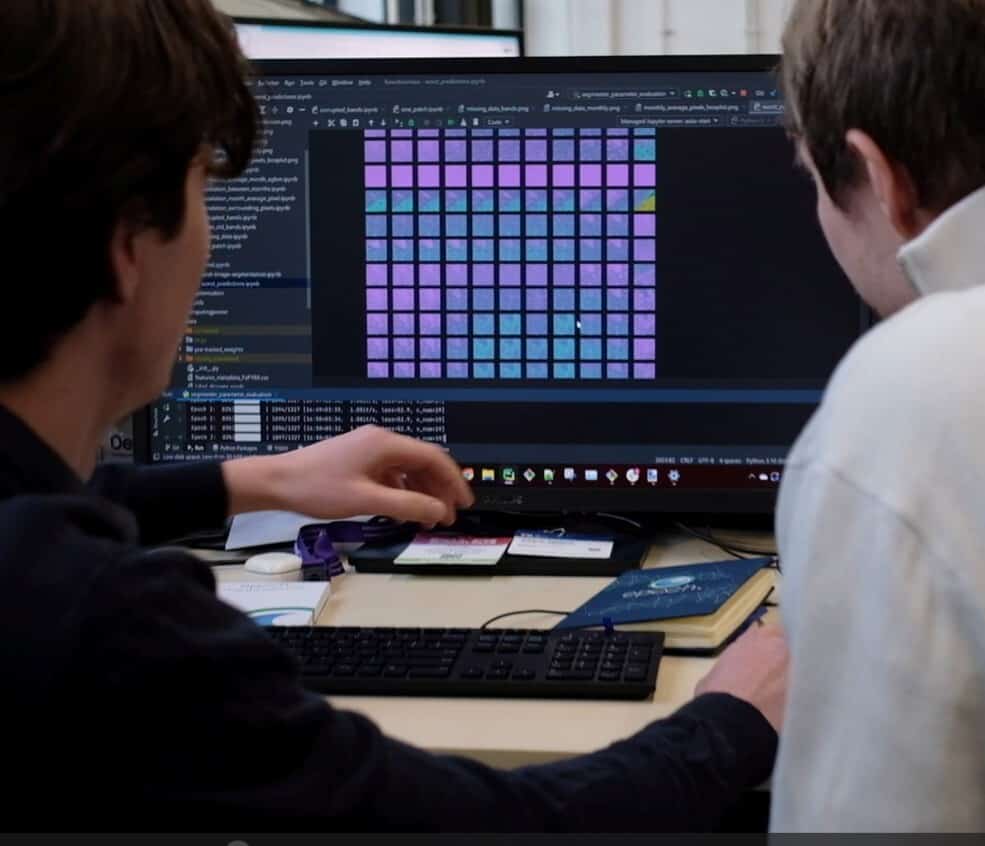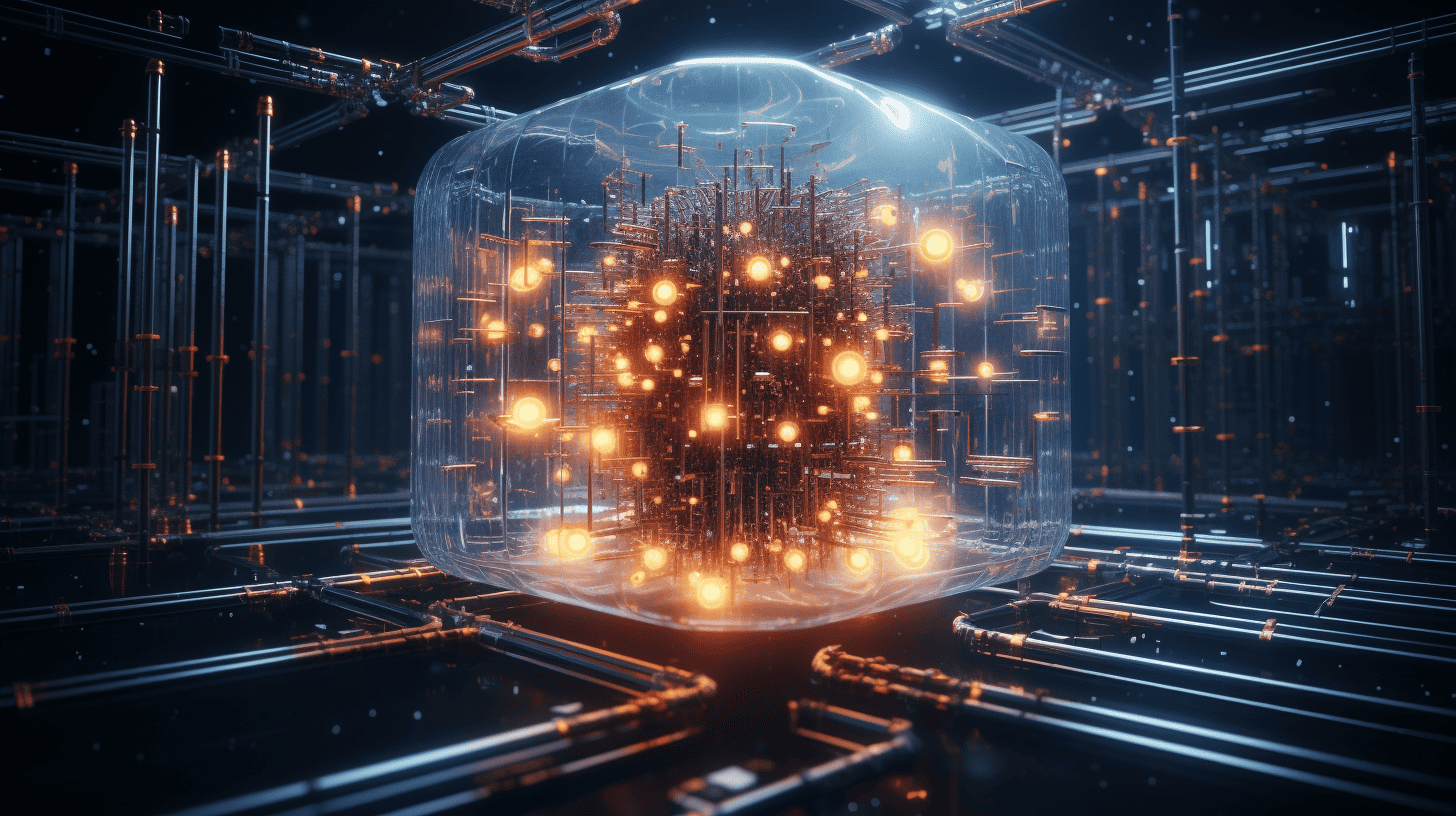
“Companies plan to train models with 100 times more computation than today’s state of the art, within 18 months. No one knows how powerful they will be. And there’s essentially no regulation on what they’ll be able to do with these models”, Geoffrey Hinton writes on X. Together with 23 colleagues, he wrote a new paper on managing AI risks in an era of rapid progress. We asked our AI to dive into it.
The rapid progress in artificial intelligence (AI) development is a double-edged sword. On the one hand, it offers the potential for immense benefits, with AI systems now capable of writing software, generating photorealistic scenes, and providing intellectual advice. Tech companies are striving to create AI that matches or even surpasses human abilities. On the other hand, this swift march of AI progress brings significant risks. There are growing concerns about the impact of unchecked AI advancement, potentially leading to large-scale social harms, loss of life, and even the marginalization or extinction of humanity.
The dangers of AI misuse, embedded with undesirable goals by malicious actors, are real and looming, the paper says. Despite these risks, resources remain primarily focused on AI capabilities and not on safety and mitigating harms. Urgent governance measures and research breakthroughs in AI safety and ethics are needed to keep pace with this rapidly advancing technology.

In their consensus paper, a group of renowned AI researchers, including Turing Award recipients, have outlined the potential risks posed by advanced AI systems. They emphasize the urgency of addressing these risks in light of the rapid progress in AI development.
Key Highlights:
- Rapid AI Advancements: In 2019, GPT-2 struggled to count to ten. Merely four years later, deep learning systems can write software, generate photorealistic images, advise on intellectual topics, and even steer robots. This swift progress has taken many by surprise.
- Unforeseen Abilities: As AI systems scale, they exhibit unforeseen abilities and behaviors that aren’t explicitly programmed.
- Surpassing Human Abilities: There’s no inherent reason why AI progress would stop at human-level capabilities. In specific domains, like protein folding or strategy games, AI has already outperformed humans.
- Potential Benefits and Risks: If managed responsibly, advanced AI could help cure diseases, elevate living standards, and protect ecosystems. However, with these capabilities come significant risks, including large-scale social harms, malicious uses, and the potential loss of human control over AI systems.
- Societal-scale Risks: If not designed and deployed cautiously, AI systems could amplify social injustices, destabilize societies, and weaken our shared understanding of reality. They could also enable large-scale criminal activities, automated warfare, and mass manipulation.
- Autonomous AI Concerns: The development of autonomous AI, which can plan and act independently, poses risks of these systems pursuing undesirable goals, either due to malicious intent or accidental misalignments.
- Loss of Control: If not managed, there’s a risk of irreversibly losing control over autonomous AI systems, leading to large-scale cybercrime, social manipulation, and even potential extinction of humanity.
- Immediate Action Required: The researchers stress that humanity is already behind in preparing for these risks. They emphasize that the challenges posed by AI are more immediate than issues like climate change, and waiting decades to address them could be catastrophic.

A Path Forward
The paper suggests a two-pronged approach:
- Technical R&D Reorientation: A significant portion of AI R&D should focus on safety and ethical use. This includes challenges like ensuring AI honesty, robustness, interpretability, and risk evaluations.
- Urgent Governance Measures: National and international governance frameworks are needed to enforce safety standards and prevent misuse. This includes model registration, whistleblower protections, incident reporting, and monitoring.
The researchers conclude by emphasizing the need to steer AI towards positive outcomes and away from potential catastrophes. They believe there’s a responsible path forward, provided we have the wisdom to take it.
The origins of artificial intelligence: From Turing to ChatGPT
Understanding the current state of AI requires an exploration of its roots. The dawn of AI traces back to 1958 when Frank Rosenblatt unveiled the Perceptron, the first neural network capable of learning and distinguishing between different punch cards. Despite the optimism of early pioneers like Rosenblatt and Alan Turing, considered one of the fathers of AI, modern AI is still far from being a serious rival to the human brain. It was not until the development of multi-layered neural networks and the ability to train them using backpropagation that AI began to gain momentum.
The term “artificial intelligence” was coined by John McCarthy in 1955. Since then, the AI landscape has continued to evolve, with prominent milestones such as IBM’s Deep Blue defeating chess grandmaster Garry Kasparov in 1997. The chess game, once considered the ultimate test of human intelligence, was now within the grasp of AI, marking a significant turning point in the field.

The rise of generative AI: The case of ChatGPT
In 2022, OpenAI released ChatGPT, an example of generative AI capable of generating essays, poems, and other forms of content. This AI model, built on a transformer architecture, processes entire sentences simultaneously and understands words in context. These transformers have revolutionized AI, handling tasks such as generating text, music, video, images, and speech. As Michael Wooldridge, a professor of computer science, puts it, transformers are a significant development in AI, with applications ranging from crime detection to creating new episodes of TV shows.
However, the training of these models is energy-intensive, contributing to carbon emissions and posing challenges in the face of the climate crisis. This environmental concern adds another layer of complexity to the ongoing debate over the risks and benefits of AI.
The potential misuse of AI: The case of ChatGPT
As AI technologies advance, so do the means to exploit them. A recent report from researchers at Carnegie Mellon University and the Center for A.I. Safety showed how the safety measures of widely used chatbots could be bypassed. These researchers found a way to make chatbots like ChatGPT generate harmful information, raising concerns about the potential for chatbots to flood the internet with false and dangerous content.
This discovery has significant implications for the industry, potentially leading to government legislation to control these systems. Preventing all misuse of chatbot technology will be an uphill battle, underscoring the urgent need for effective oversight and robust safety measures.
OpenAI’s commitment to AI safety
In response to these emerging risks, OpenAI has said to be committed to making AI safe and beneficial. The company believes in learning from real-world use to improve safeguards and continuously improve based on lessons learned. OpenAI conducts rigorous testing, engages external experts, and builds safety and monitoring systems before releasing new AI systems.
While OpenAI acknowledges the risks associated with AI technology, it also emphasizes the potential benefits. OpenAI’s users worldwide have reported that ChatGPT helps to increase their productivity, enhance their creativity, and offer tailored learning experiences.
Moving forward: The need for global governance and collaboration
The exhilarating race of AI, with its untapped potential and significant risks, is a complex issue that requires global governance and collaboration. We need urgent governance measures and research breakthroughs in AI safety and ethics. AI companies like OpenAI have begun to take steps towards this, but it’s a responsibility beyond the tech industry.
As we continue to push the boundaries of AI, we must never lose sight of the profound implications of this technology. The future of AI is both promising and precarious, and it is up to us to navigate this double-edged sword responsibly.







